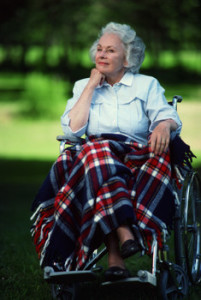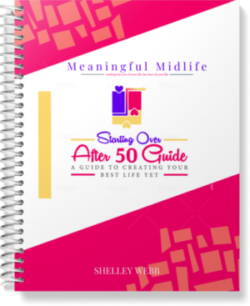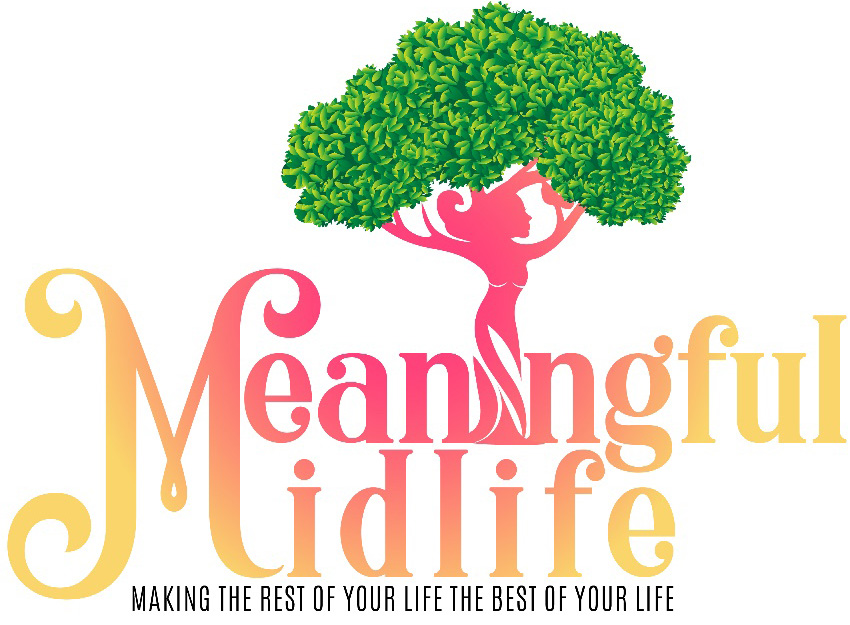My remembrances of my father always included his statement that he “had a bum leg”. Apparently when I was just a baby, he was working for the timber board in Canada and had fallen on a boom of logs which caused him to break his back. The medical solution at that time was to take a piece of his leg bone and graft it on to his back bone. He was in a cast from neck to toe for almost a year. It wasn’t a great fix and he continued to have difficulties with his leg until the day he died. So when he came to live with me, mobility issues were a big concern, especially since I lived in a home with stairs both inside and leading into the home.
baby, he was working for the timber board in Canada and had fallen on a boom of logs which caused him to break his back. The medical solution at that time was to take a piece of his leg bone and graft it on to his back bone. He was in a cast from neck to toe for almost a year. It wasn’t a great fix and he continued to have difficulties with his leg until the day he died. So when he came to live with me, mobility issues were a big concern, especially since I lived in a home with stairs both inside and leading into the home.
Because there are many other issues that can affect the mobility of our aging parents and loved ones, I went searching and I found this article by Anthony Fulworm. I thought that he had done an excellent job of pointing out some of the problems and solutions found when dealing with loved ones with mobility issues so I wanted to share it with you.
Immobility Problems and Solutions by Anthony Fulworm
Immobility can often become an issue for those who suffer from disabilities, illnesses or aging; it can also lead to further problems due to prolonged inactivity. When it comes to immobility, multiple areas of the body are often affected rather than just one area in particular. The effects of immobility effect people in different way, with disabilities sometimes areas cannot be improved but sometimes although they cannot be reversed they can be minimized and this is often the case with the elderly. By making small steps to concur immobility can have a very positive effect on reducing the risk of other complications.
The common risk factors of immobility in the elderly are categorised and bulleted below:
Musculature, joint, and skeleton problems
• Arthritis
• Osteoporosis
• Fractures (especially hip & femur)
• Podiatric problems
Neurological problems
• Stroke
• Parkinson’s disease
• Cerebellar dysfunction
• Neuropathies
Heart, lung, and circulation problems
• Chronic coronary heart disease
• Chronic obstructive lung disease
• Severe heart failure
• Peripheral vascular disease
Cognitive, psychological and sensory problems
• Dementia
• Depression
• Fear and anxiety
• Pain
• Impaired vision
Others
• General weakness after prolonged bed rest
• Malnutrition
• Drug side effects
• Severe illness of any type
• Inadequate aids for mobility
To alleviate these problems the following activities should be performed:
• Firstly continuing with daily activities is important, having a routine that your body is used to will prevent your body deteriorating. If tasks become too exhausting however these should be dropped or replaced.
• Increase the level of exercises starting small and increasing gradually. These exercises will help with circulation to keep your heart working well and promote repair healing and where possible growth. Daily exercises
• As well as exercising the muscles in your body stretching those muscles will help reduce the risk of injury from every day activities and again aid in healing and repairing muscles.
• Eating and drinking correctly is important but with increased activity drinking more water is important, ensure you are rehydrated adequately.
• Maintain contact with others to stimulate your mind and body, often being by yourself can lead to a lonely lifestyle with little to no interaction with others, this does not promote positivity very well.
• If certain activities are difficult or uncomfortable consider using aids to help, walking frames, wheelchairs, walking sticks, ankle support, heel pads. There are many products on the market to help getting around.
• Bathing and getting around the home can be difficult if you suffer from immobility, consider purchasing hand rails or installing a stair lift ( http://www.brooksstairlifts.co.uk/ ).
Article Source: http://EzineArticles.com/
LEARN TO LOVE YOUR LIFE AGAIN
 Do you feel like you need to hit the REFRESH button on your life? Download our free guide and begin to create your best life yet!
Do you feel like you need to hit the REFRESH button on your life? Download our free guide and begin to create your best life yet!



To alleviate these problems the following activities should be performed:
• Firstly continuing with daily activities is important, having a routine that your body is used to will prevent your body deteriorating. If tasks become too exhausting however these should be dropped or replaced.
• Increase the level of exercises starting small and increasing gradually. These exercises will help with circulation to keep your heart working well and promote repair healing and where possible growth. Daily exercises
• As well as exercising the muscles in your body stretching those muscles will help reduce the risk of injury from every day activities and again aid in healing and repairing muscles.
• Eating and drinking correctly is important but with increased activity drinking more water is important, ensure you are rehydrated adequately.
• Maintain contact with others to stimulate your mind and body, often being by yourself can lead to a lonely lifestyle with little to no interaction with others, this does not promote positivity very well.
• If certain activities are difficult or uncomfortable consider using aids to help, walking frames, wheelchairs, walking sticks, ankle support, heel pads. There are many products on the market to help getting around.
• Bathing and getting around the home can be difficult if you suffer from immobility, consider purchasing hand rails or installing a stair lift ( http://www.brooksstairlifts.co.uk/ ).
+1
Senior care providers should include a regular exercise regimen in a patient’s care plan. Disabled seniors should still have a dose of light physical activities to promote physical well-being an increased level optimism for immobile folks. Going out in the sun or a walking in the park with them is a pretty good idea.To make sure hourly or daily activities are carried out, private care agencies should have caregiver software to track and monitor real-time updates about the a patient’s daily care plan.
Thank you for posting! You have an excellent blog, as well as a great writing style. It was very easy to read. I live with my 92 year old Grandpa, and making the house senior safe was pretty difficult in the beginning. I see now that it has paid off. My Grandpa’s younger brother recently passed away from complications after a fall. It is something that we worry about constantly, and so we make sure that it is taken care of all the time.
I also work with senior citizens every day, helping them cover the out of pocket gaps brought on by government Medicare. I will definitely pass this information along. Thanks again for sharing.
Thank you very much, Brian. And thanks, especially, for helping to care for your Grandpa. Please remember, though, that seniors will fall, even if they’re 5 feet away from you. So the guilt monsters attack.
Best, Shelley
Hello. I am Jennifer Timmons and I am caring for my father who is 80 years old. Over the past two years he has gradually changed from being able to use his walker to becoming more wheel chair bound. This year, he had another set back in the hospital where he had to be bed bound for eight weeks. He has been in three nursing homes and this past week it was just discovered that his left foot is contracting and turning inward. My mother is frantic and upset because she cannot believe that since the hospital no Healthcare Dr., Aide or Therapist addressed this problem. She feels that he is going to be crippled for life. At the last facility where he was living, we were not allowed to see him but thirty minutes and I just did not think to look at his feet. The therapist now has given him a hard boot to wear during the day while he is out of bed. Do any of you know much about this type of problem? Is there any hope of him walking again?
Thank you for this site. The ideas in this for immobility are wonderful.
Hi Jennifer,
I’m so sorry to hear about your father’s situation. While I can’t give you medical advice, of course, I can say that I’m glad a therapist is now working with him and that the foot should show some improvement (yes, this should have been addressed in the hospital). After 8 weeks of being bed bound, seemingly without therapy while there, he may not return to his former state of mobility. Perhaps once the hardboot has helped to stabilize his foot in a better position, the therapist might be able to work with him on some additional exercises.
Best wishes and do keep us updated.
Shelley
I am in a wheelchair and have mild heart disease. I’m wondering if there are exercises that I can do to help my heart?
Thank you
Hi Denise,
There are some exercises that can be done in a wheelchair and with mild heart disease. Consult your doctor first of course, but you may want to research “ZENgevity” which is gentle movements or Stuck in Bed Fitness which is a system that works with folks both in wheelchairs and in bed.
Shelley- would like to talk to you. When caregiving for relatives I invented an innovative bed mobility system (see http://www.FriendlyBeds.com) to keep elderly/disabled people safe, independent, and at home. Equally important for the health/safety of the caregiver. Would love to get your feedback.